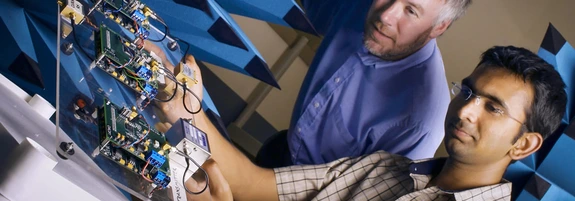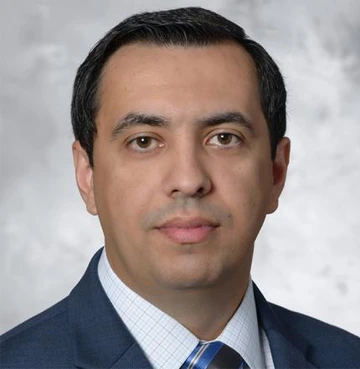
Research
Advancing Technology
From Guidance Systems to Green Energy
U of A Aerospace and Mechanical Engineering, with annual research expenditures of $9.2 million, has initiated breakthroughs in areas ranging from microelectromechanical systems to the behavior of objects in space.
AME faculty and students collaborate with researchers across campus and around the world to develop technology and processes for creation of the next aircraft materials, spacecraft guidance systems, autonomous vehicles, implantable medical devices, tissue engineering and renewable energy, for example.
Some of the nation’s top aerospace, defense and high-tech manufacturing companies are in close proximity to the University of Arizona. These industries work with AME on research for technological advancement, and the university’s commercial arm, Tech Launch Arizona, helps ensure inventions get to market.
Primary Research Areas
- Aerospace technology
- Biomechanics
- Computational mechanics
- Fluid mechanics
- Micro- and nanotechnology
- Renewable energy
- Solid mechanics
See research Focus Areas and 26 graduate research labs (PDF) for more information.
Project Highlight
Deep Learning for Data Tracking
Vitaliy Yurkiv, an assistant professor, and Farzad Mashayek, professor and head of the aerospace and mechanical engineering department, research artificial intelligence algorithms that quickly analyze complex data from microscopy images.
"Now with machine learning, we can do it in a couple of seconds. Or, when an experiment recorded 1,000 images or 10,000 images, a researcher would need years to analyze them. But now, with our developed method, we can do it in one hour or less with modern graphics processing units," Yurkiv said.

Centers and Facilities
AME’s wind tunnels and machine shop rival many in academia and industry. Additionally, the University of Arizona, a Tier 1 research institution, is home to a number of renowned labs, centers and institutes vital to the work of AME researchers.
See U of A College of Engineering-affiliated Research Centers and Institutes.
Featured Videos
Engineering by Touch
Kavan Hazeli
Speeding Toward Hypersonic Flight
Jesse Little and Erica Corral
Keeping Space and Planets Safe
Robert Furfaro and Vishnu Reddy
Fast Facts
6th
NASA-funded activity
$9.2 million
annual research expenditures
(2024)
Mach 5
wind tunnel capabilities
